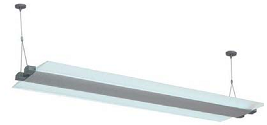Reference no: EM13876470
PART #1
Below is a table containing a year's worth of electrical data from a small two-story multifamily building without central air conditioning:
| Month |
From Date |
To Date |
Electric Use (kWh) |
Electric Demand (kW) |
| August |
8/1/2012 |
8/30/2012 |
17,160 |
34 |
| September |
8/30/2012 |
10/1/2012 |
15,528 |
31 |
| October |
10/1/2012 |
10/30/2012 |
13,088 |
27 |
| November |
10/30/2012 |
12/3/2012 |
13,680 |
28 |
| December |
12/3/2012 |
1/2/2013 |
12,240 |
28 |
| January |
1/2/2013 |
2/1/2013 |
12,456 |
27 |
| February |
2/1/2013 |
41,337 |
13,032 |
28 |
| March |
3/4/2013 |
4/2/2013 |
11,232 |
29 |
| April |
4/2/2013 |
5/1/2013 |
10,440 |
30 |
| May |
5/1/2013 |
6/2/2013 |
11,232 |
31 |
| June |
6/2/2013 |
7/1/2013 |
13,440 |
32 |
| July |
7/1/2013 |
7/31/2013 |
15,944 |
33 |
The cost of electricity is $0.14/kWh in June, July, August and September and $0.11/kWh the rest of the year. The cost of power (kW) is $37.80 in June, July, August and September and $32.40 the rest of the year.
Based on this information, for each of the 12 months please calculate the building's:
Load factor for each month
Average kWh used per day for each month
Total electric cost for each month
PART #2
This building's corridor lighting operates 24/7. The corridors are over-lit. Let's refer to the current system configuration as "Lighting Type A", which is typical of many existing buildings: two-lamp 4' T12 fluorescent fixtures with magnetic ballasts, spaced every 8 feet along the length of a 4-foot wide corridor.
Assuming each fixture uses 72 watts, the lighting power density is 2.25 watts per square foot (w/sf), which is extremely high. It turns out the average light level for this design is almost 50 footcandles, five times higher than necessary.
Now consider an alternative: "Corridor Lighting Type B", which is comprised of single-lamp 4' T8 fixtures with electronic ballast, spaced every 20 feet. Each fixture uses 30 watts and the light level meets the recommended 10 footcandles.
Assume that the corridor is 96 feet long, with lights on 24/7, and, again, the cost of electricity is the same as above: $0.14/kWh in June, July, August and September and $0.11/kWh the rest of the year. The cost of power (kW) is $37.80 in June, July, August and September and $32.40 the rest of the year.
Also remember that you need whole fixtures, not fractions of a fixture; so your answer can not be that 1.5 fixtures are required.
Using the lighting power densities and utility costs provided above, for a single floor of this building please:
• Determine the lighting power density of design Type B
• Determine annual cost of lighting with design Type A including demand charges
• Determine annual cost of lighting with design Type B including demand charges
• Determine first year dollar savings for converting Type A to Type B
• Determine what the first year annual dollar savings would be if you were to have used the blended $/kWh derived in Part #1 instead of a marginal rate analysis that includes demand charges
PART #3
Now imagine that you pursue the Type B design, but are also able to install occupancy sensors that control every other fixture in the corridor. The strategy is that half of the lighting will be on a dedicated circuit to provide emergency lighting, which will always stay on while the other half will be driven by occupancy sensors. This is an energy saving strategy because code only requires 2 foot candles in corridors at all times for emergencies and the Type B design provides 10. Cutting the lighting in half while the corridor is empty through occupancy sensing will still exceed code requirements for light provision.
All of the sensor-driven fixtures will come on simultaneously when someone enters the corridor and the lights will be programmed to stay on for 15 minutes before automatically shutting off. Because of this delay, you project that you will only be able to shut off half of the fixtures 20 hours a day even though the corridors are empty over 96% of the time.
• Determine annual cost of lighting with design Type B plus occupancy sensors as described above
• Should demand charges be included in this calculation? Please answer in a three sentences or less why or why not.
PART #4
You are in a classroom that is lighted with florescent tubes in the following up/down fixture:

When containing a florescent tube, this fixture has an efficiency of 95% mostly due to the omnidirectional nature of florescent tubes. Each fixture contains two 4' T8's with electronic ballasts; it gives off 5,429 lm and uses 63 watts. An LED salesman suggests replacing the lamps with linear LEDs. His argument is that the LED tubes are more efficient because they and (last twice as long). You read the cut sheet and discover that his lamps use 19 watts and provide 1800 lm each. However, because LED tubes are directional lamps, if you only replace the lamps and keep the same fixtures, the fixture efficacy drops to 60% (the light will only shoot up to the ceiling, not the floor). The classroom is 10% over-lit; it cannot afford to have a reduction in lighting output over 10% due to this retrofit. Assuming cost isn't a consideration, answer the following question:
• By how much will the lumen output increase or decrease as a result of the LED retrofit?
• Is this an acceptable strategy given the existing light levels of the space?